“The best thing about watercolor is the accidental blending of wet colors,” says Jeff Mathison. “Paint that mixes of its own accord as it is applied to the paper will have a liveliness that colors blended on the palette cannot achieve.
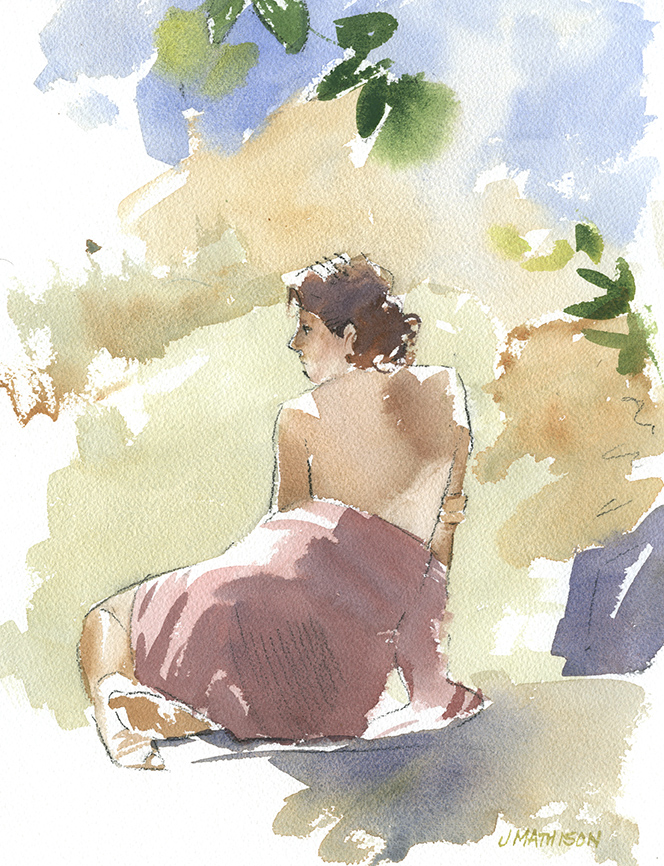
“The worst thing is that the paint dyes the paper and can never be totally removed. Nor can it be covered over. White paper is invaluable for contrast with the darks and the colors. I burn a lot of watercolors that died of mediocre value contrast.
“There are many ways to paint flesh tones. My recipe starts with a particular color from the Daniel Smith catalog. Their version of cobalt violet combines smoothly with several other colors on the palette. When brushed on, it settles out of solution into the grain of the paper, creating a fine mottled effect that suggests the textures of real skin. I add cobalt teal blue to the violet for the first glaze. While the paint is still wet, I add a mix of buff titanium with varying amounts of cadmium red, imperial purple, and others, to match the model’s skin color.
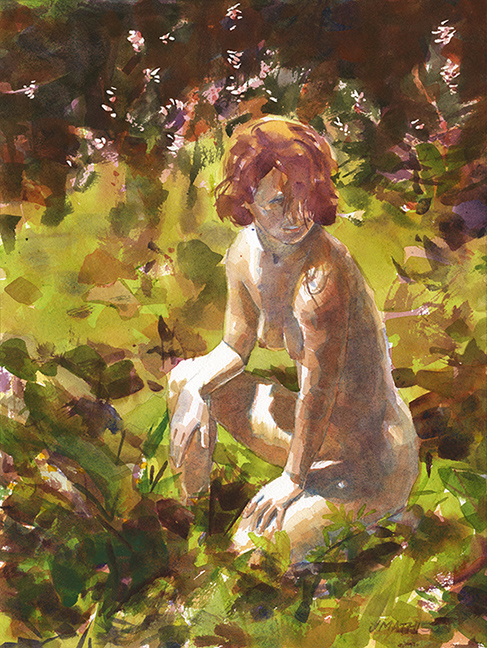
“I like to take models outside. We may hike a long trail to reach a rocky waterfall, or just step out to the garden. The point is to connect the human story, as represented by a model, with the spirit of Nature.
“When painting the figure, I try to tie in the background with at least a bit of the body colors showing up in the bark, or rock or vegetation. Usually the shadow areas on the figure are bluish from picking up the sky color.”
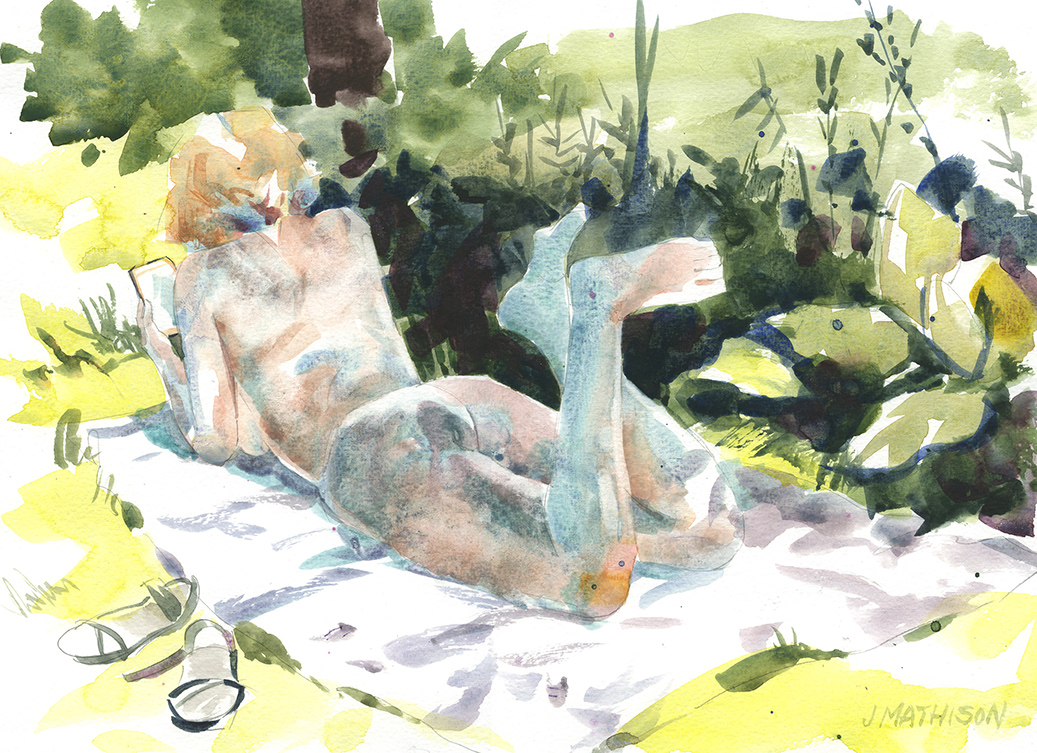
Jeff Mathison always enjoyed working with the human figure and the natural landscape. “I now frequently combine the two genres, seeking to inspire my viewers with the harmony of the human spirit and nature,” he says. Instagram: artbyjeffm
For more inspiring stories like this one, sign up for our free weekly e-newsletter.

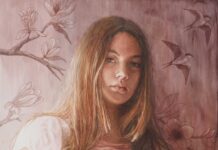
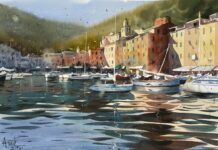





Jeff, you’ve captured the fresh atmosphere of a spring day. I enjoyed hearing which colors you use for the excellent skin tones. Choices like these come from a long time spent in observation, trial and error.